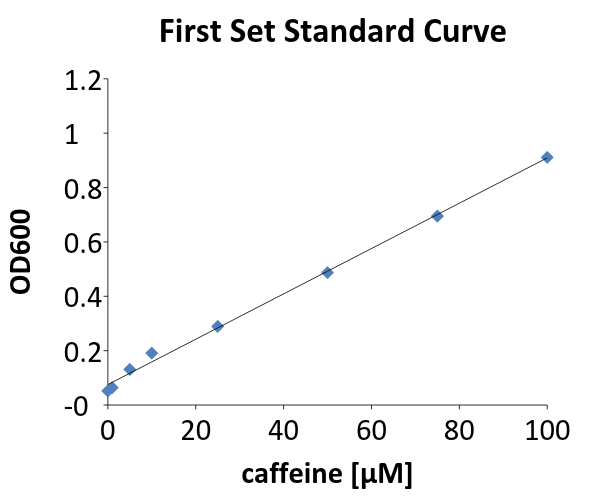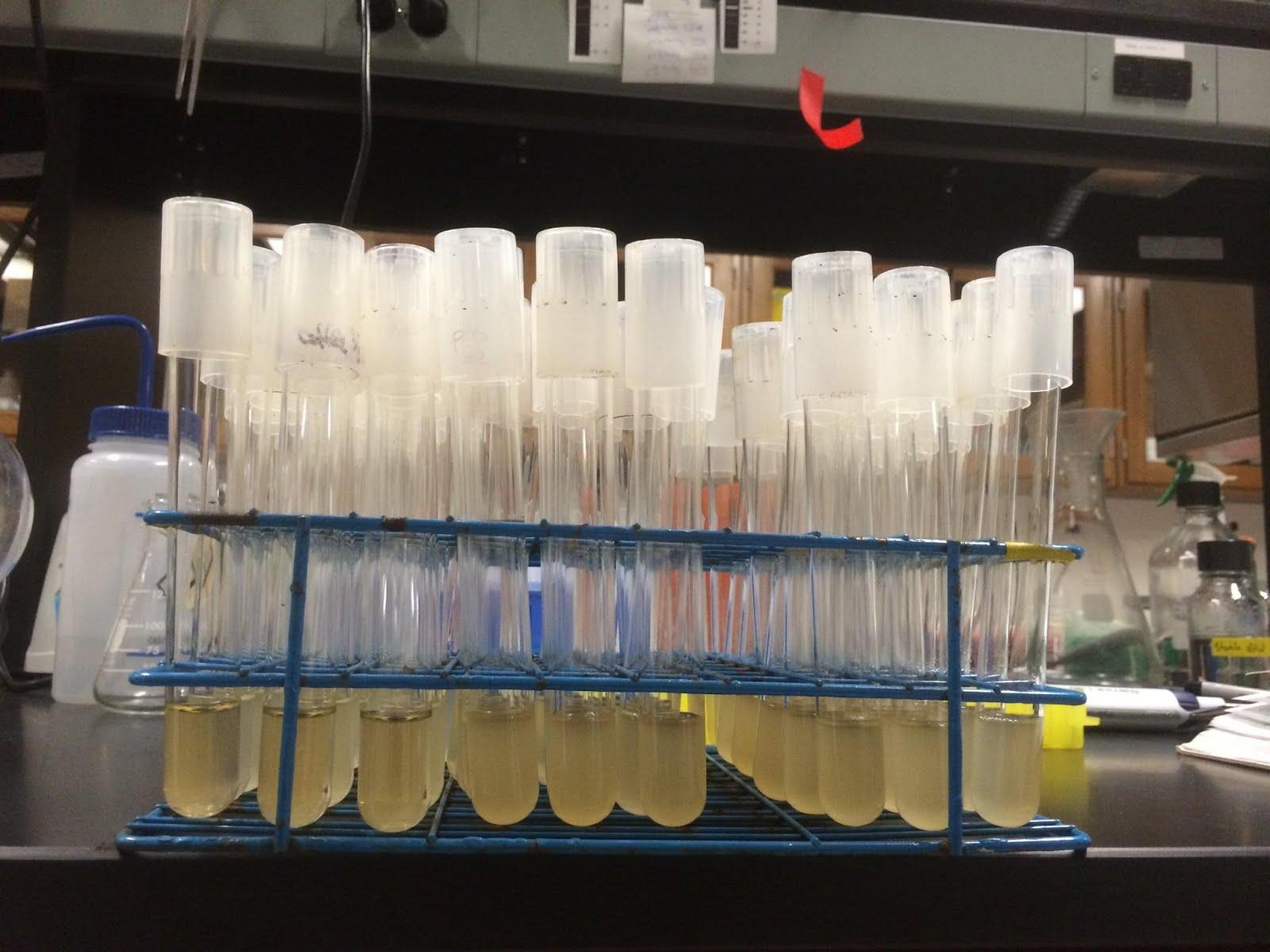Team:Austin Texas/human practices
From 2014.igem.org
| Line 56: | Line 56: | ||
<h1>Caffeinated Coli</h1> | <h1>Caffeinated Coli</h1> | ||
| - | In 2014, the UT Austin iGEM team reached out to the community by going to dozens of Austin coffee shops, located throughout the city | + | [[file:UT_Austin_Coffee_shops_map.png|200px|thumb|right| Map of coffee shops we visited.]]In 2014, the UT Austin iGEM team reached out to the community by going to dozens of Austin coffee shops, located throughout the city, and collected samples of their house coffee. We then took these samples back to our lab, and using a strain of E. coli previously developed by the 2012 UT Austin iGEM, we employed the E. coli to assess how much caffeine was present in each cup of coffee. |
| + | |||
| + | |||
| + | [[file:UT_Austin_relative_caffeine_levels_coffee_shops.png|600px|thumb|left| Relative levels of caffeine in house coffee samples from around Austin.]] | ||
| + | |||
| + | |||
| + | |||
| + | |||
| + | |||
| + | |||
| + | |||
| + | |||
| + | |||
| + | |||
| + | |||
| + | |||
| + | |||
| + | |||
| + | |||
| + | |||
| + | |||
| Line 62: | Line 82: | ||
| - | < | + | <h2>Measuring Caffeine Content</h2> |
| + | |||
| + | [[file:UT_Austin_caffeine_growth_standard_curve.png|200px|thumb|right| Standard growth curve of knockout strain grown with different amounts of caffeine.]] | ||
| + | |||
| + | The E. coli we used were a modified knockout strain that could not synthesize guanine using its normal pathway, but had a plasmid introduced with a set of genes that allowed it to synthesize guanine from xanthine and many of its derivatives, including caffeine. Without caffeine (or certain other xanthine derivatives), the strain will not grow. When caffeine is added, the strain will grow normally until it runs out of caffeine, at which point it will stop growing. Thus, by looking at the relative growth of the strain with different samples of coffee and comparing it to a standard curve of growth in solutions with known amounts of caffeine, we could somewhat accurately measure the amount of caffeine in the coffee. | ||
| + | |||
| + | [[file:UT_Austin_E._coli_coffee_cultures.jpg|300px|thumb|left| Cultures of knockout strain grown with collected coffee samples.]] | ||
| - | |||
Revision as of 22:06, 10 October 2014
|
 "
"



